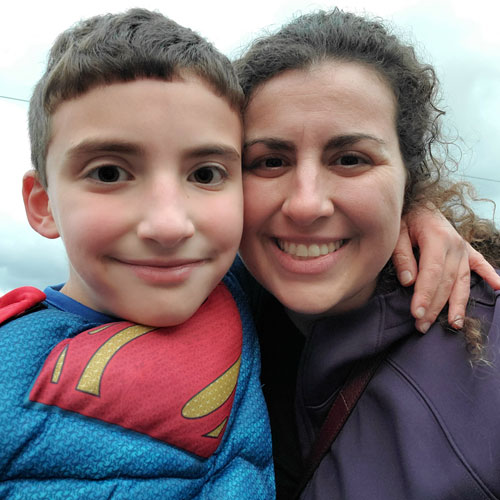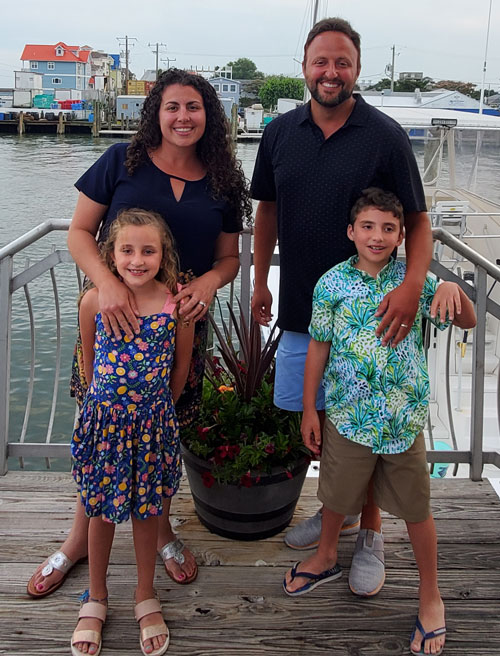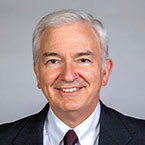By: Douglas R. Fredrick MD, FAAP
Nystagmus is a condition where the eyes move constantly and uncontrollably, appearing to wiggle or shake side to side or up and down. Nystagmus can be seen in children who have other eye conditions that cause poor vision. However, it can also occur in children who have healthy eyes and only slightly decreased vision. When nystagmus develops suddenly later in life the condition may also affect balance and
coordination.
People who develop nystagmus early in life typically are not aware of their eye movements, but other people may see them. Children who develop nystagmus in infancy do not see the world shaking back and forth, even though their eyes are in constant motion.
Here's what else parents need to know about this condition.
What are the signs of nystagmus in children?
If your infant or child experiences any of the following symptoms, contact their pediatrician right away:
Involuntary eye movements such as side-to-side (horizontal nystagmus), up-and-down (vertical nystagmus), or circular (rotary or torsional nystagmus)
Uncontrollable movement in one eye or both eyes
Seeing objects as
blurry or shaky
Issues seeing at night
Sensitivity to light
Dizziness and problems with coordination or balance

My child has nystagmus. Here's what I'd like you to know.
By: Domenica Pasinella
 My husband's grandmother was the first to point out that something was wrong with my infant son's eyes. They bounced to the left and right, and he turned his head to focus on us.
My husband's grandmother was the first to point out that something was wrong with my infant son's eyes. They bounced to the left and right, and he turned his head to focus on us.
We mentioned it to our pediatrician who referred us to a specialist. And at 16 weeks our son, Anthony, was diagnosed with nystagmus.
During that appointment, we heard that Anthony would likely never walk correctly or drive. We left stunned. We lived like that for 14 months, until I found my community; my people. I'm a learner at heart, so I went out and found adults with nystagmus and parents of children with the condition.
I found groups like the American Nystagmus Network and others on Facebook. I watched them treat each other with kindness and support. They celebrated each other's milestones, such as when someone got their driver's license. They shared information, like how to ask for school accommodations and what raised line paper is.
Through this community, I also found doctors who specialize in nystagmus. I was able to keep up to date on the latest research.
Most of all, my new network made me realize that it is possible for people with nystagmus to live full lives. And they helped me feel that we weren't alone.
Today, Anthony loves tae kwon do; he's very into it. He plays basketball and rides a bike, with caution. He's a good reader and gets good marks in school.
 He is a little off balance, but he tries everything. One day, he came to us wanting to play baseball. We were very hesitant, but he really wanted to try. He struck out almost every time, and one time he took a baseball right to the mouth. He was so happy as he took the base, bloody mouth and all. I felt so guilty. Be there he was, nothing broken, celebrating on base.
He is a little off balance, but he tries everything. One day, he came to us wanting to play baseball. We were very hesitant, but he really wanted to try. He struck out almost every time, and one time he took a baseball right to the mouth. He was so happy as he took the base, bloody mouth and all. I felt so guilty. Be there he was, nothing broken, celebrating on base.
We talked to him right after the game. "Buddy, if you can't see the ball, and want to be done, no problem, you never have to play baseball again." But he went to the next game. He was scared, but he went. Kids, they're so resilient.
Thank goodness, he's now more interested in soccer.
Anthony has a laundry list of other diagnoses, but I've followed the same playbook that I did with nystagmus. I seek out supportive communities to help navigate what's ahead.
Nystagmus was a super scary diagnosis for me as a new parent. My message to parents encountering it for the first time is that it's not as scary as you think.
Domenica Pasinella is secretary of the Board of Directors for the American Nystagmus Network. She's a mother of two and lives in Albany, N.Y.
How is nystagmus diagnosed in infants and children?
If your child is showing symptoms of nystagmus, the doctor will focus on your child's nervous system and inner ear. They may refer you to a pediatric ophthalmologist for testing, which may include:
A
comprehensive eye exam including dilation of the pupils, with special emphasis on how the eye moves and examination of the eye nerves and retina
Patient history to determine if symptoms are from other health issues, medication, or other causes
Testing how the eyes focus, move and work together
A refraction to determine the lens power needed to compensate for
nearsightedness, farsightedness, or astigmatism
MRI or CT scan of the brain if there are other findings of neurologic disorder
Ear exam
Neurological exam
Your child may also be asked to spin around for 30 seconds, stop, and try to stare at an object to observe the movement of their eyes. If your child has nystagmus due to a medical condition, the type and severity of the involuntary eye movements will depend on the cause.
What are the causes and types of nystagmus in children?
Nystagmus can be congenital, which means your child can be born with the condition. Children may also develop nystagmus later in life due to disease or
injury.
Types of nystagmus
-
Infantile nystagmus syndrome (INS). This type may also be known as infantile nystagmus, congenital nystagmus or early onset nystagmus. It most often develops between 6 weeks and several months of age. The uncontrollable movement of the eyes is typically in a horizontal swinging direction.
INS is only diagnosed after other conditions, such as albinism,
cataracts, underdeveloped optic nerves and retinal disorders, have been ruled out in an exam. The cause of infantile nystagmus can be an inherited condition and is often not known.
-
Spasmus nutans usually occurs between 6 months and 3 years of age. Spasmus nutans typically improves on its own in children between 2 and 8 years of age. The involuntary eye movement may move in many directions.
Children with spasmus nutans nystagmus may often tilt or nod their heads. They will need either an MRI or CT scan of the brain to make certain there are no associated neurologic disorders. However, this type of nystagmus typically does not require treatment or intervention.
-
Acquired nystagmus. This type of nystagmus develops later in childhood or adulthood. Uncontrollable eye movements can be side to side, up and down or circular. Acquired nystagmus can develop for many reasons. It may be caused by certain drugs or medicines, typically
antiseizure medicine or other sedating medicine. It can also be the symptom of another condition or disease such as a
stroke, multiple sclerosis, inner ear disorders or trauma.
All children with newly acquired nystagmus should see their pediatrician, neurologist and a
pediatric ophthalmologist to determine if there are any underlying causes.
How is nystagmus treated in children?
In many cases of congenital nystagmus, there is no treatment. Some types of nystagmus will improve throughout childhood. Many children with nystagmus will discover that their vision improves, and the amount of nystagmus decreases when they turn or tilt their head and look at objects with side gaze. These positions of gaze, called a "null point," should not be discouraged by parents or teachers.
Most children born with nystagmus live normal, active lives. Getting help early on from orientation and mobility experts, physical and occupational therapy and low vision specialists will benefit both your child and your family.
Some children may need
accommodations to help with coordination, visual problems or nervous system disorders. Eyeglasses and
contact lenses do not cure nystagmus, but they can sometimes improve vision changes that occur due to the condition. Large-print books, magnifying devices, raised line paper and increased lighting may also help your child.
Operating on the muscles that move the eyes (strabismus surgery) is sometimes recommended for children with nystagmus. This changes the position of muscles that move the eyes. This surgery does not cure nystagmus, but it may reduce how much your child needs to turn their head for better vision (changes the null point described above).
If your child is diagnosed with nystagmus, you can work with their doctor to create a treatment plan specific to the cause of your child's nystagmus.
More Information
About Dr. Fredrick
 Douglas R. Fredrick MD, FAAP, a pediatric opthalmologist with Kaiser Permanente South San Francisco, is a Fellow of the American Academy of Ophthalmology and the American College of Surgeons who also serves on the Board of the American Orthoptic Council as President and Co-Chair of the Examination Committee. Within the American Academy of Pediatrics, Dr. Fredrick serves on the Executive Committee as Education Chair in the Section on Ophthalmology. Dr. Fredrick has served as volunteer faculty on more than 20 missions with Orbis, an international non-profit organization that improves access to eye care.
Douglas R. Fredrick MD, FAAP, a pediatric opthalmologist with Kaiser Permanente South San Francisco, is a Fellow of the American Academy of Ophthalmology and the American College of Surgeons who also serves on the Board of the American Orthoptic Council as President and Co-Chair of the Examination Committee. Within the American Academy of Pediatrics, Dr. Fredrick serves on the Executive Committee as Education Chair in the Section on Ophthalmology. Dr. Fredrick has served as volunteer faculty on more than 20 missions with Orbis, an international non-profit organization that improves access to eye care.